
Hex Mayflies
Hexagenia limbata
The famous nocturnal Hex hatch of the Midwest (and a few other lucky locations) stirs to the surface mythically large brown trout that only touch streamers for the rest of the year.

Baetis bicaudatus (BWO) Mayfly Nymph Pictures
Here I'm just copying and pasting, without cleaning up, my notes from spending a long time with this one under the microscope (and keying with Merritt & Cummins 5th Ed) only to end up confirming the most likely guess.
7. Baetis bicaudatus nymph
1. Hind wingpad present but small and hidden beneath forewing pad
2. Segment 2 of labial palp with well-developed medially projecting corner --> Baetis (couple 44). BUT no sign of scale-like setae on abdominal terga. Conflicts at this couplet.
3. Gills on segments I-VII
4. Tarsal claws with denticles, seemingly 2 rows but very hard to tell… and the key options with 2 rows don’t make sense
5. Assuming no villipore, we land confidently at couplet 48
6. Leads to Fallceon, except antennal scape doesn't have robust setae
7. Treated as Baetis, leads to brunneicolor, but McDunnough et al 1932 (Can Ent 64) suggests middle tail should be 5/6 as long as outer ones
8. Keys VERY confidently to couplet 36 in M&C (villipore)
9. If assuming villipore present:
1. 37 --> Scape of antennae has no distal lobe --> rules out Labiobaetis (100 % certain)
2. 38 --> Terminal filament much shorter than cerci --> not Barbaetis benfieldi (100 % certain)
3. 39 --> Terminal filament reduced (100 % certain)
4. 40 --> Tarsal claw denticle count couplet. If two rows of denticles: Either Iswaeon or Heterocloeon. Can't be Iswaeon because cerci lack dark median band. Can't be heterocloeon because it's not in the Platte drainage or in Texas. Thus, it must be one row of denticles. Moving on to 42.
5. 42 --> Hind wing pads present (100 % certain)
6. 44 --> Segment 2 of labial palpi with well-developed medially projecting corner (80 % certain), scale-like setae not evident on terga but maybe limitation of my scope --> Baetis (alternative would be Acentrella, but pronotum shape is all wrong for those, although not an official characteristic)
7. CONFIDENT in Baetis bicaudatus after distinctive leg markings (J-shaped light mark on first femur, L-shaped on second and third) matches original species description to a tee.
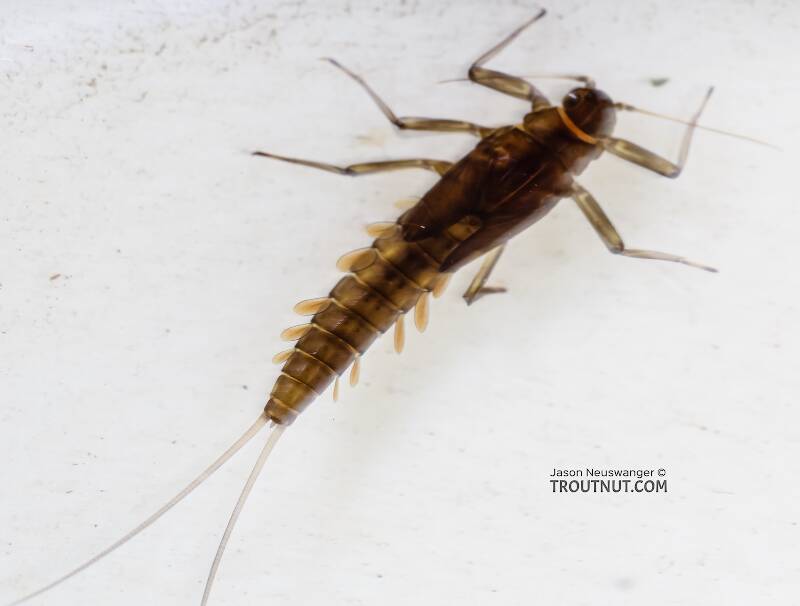
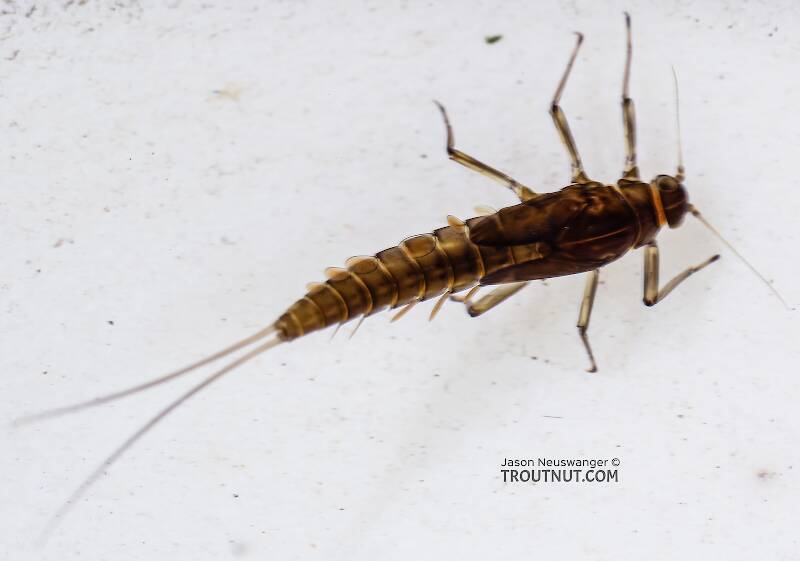
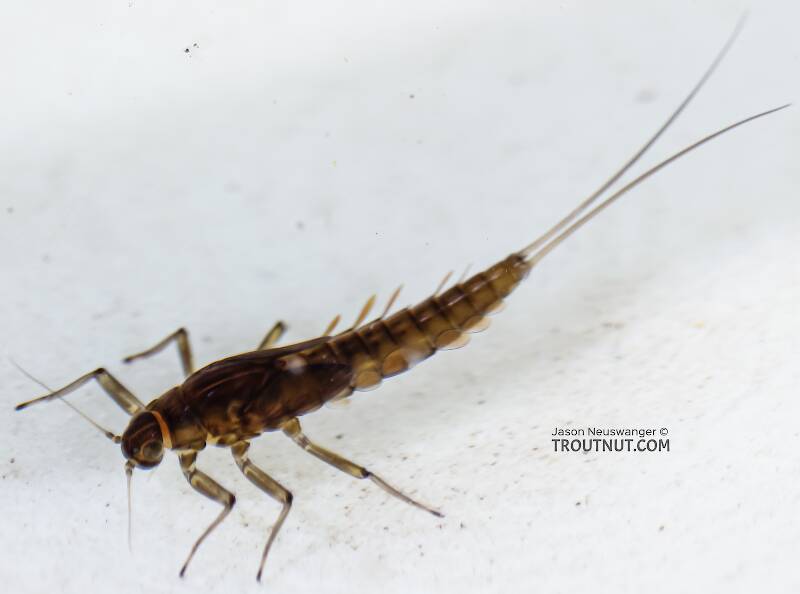
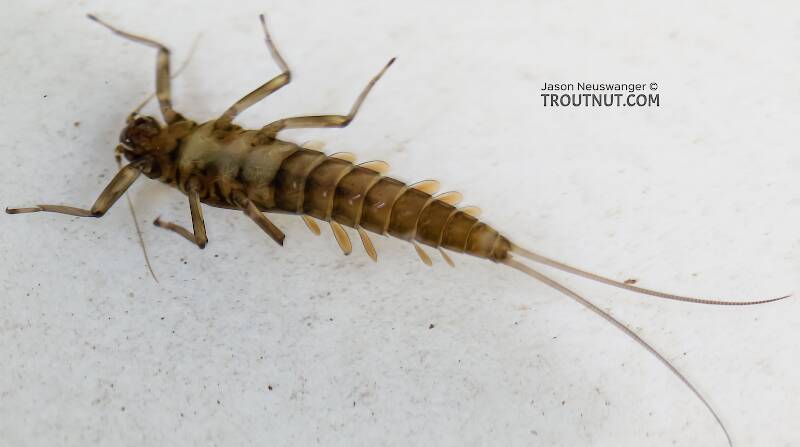
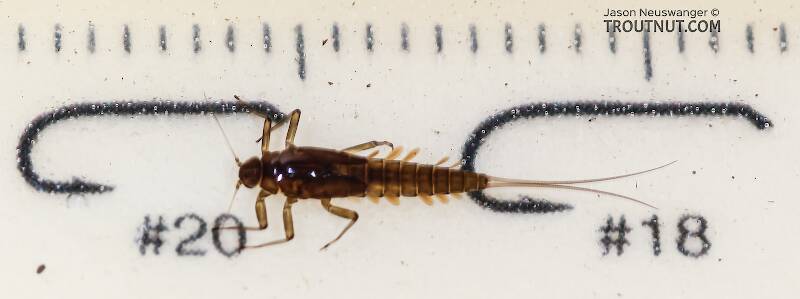
This mayfly was collected from Green Lake Outlet in Idaho on August 4th, 2020 and added to Troutnut.com by Troutnut on August 20th, 2020.
Start a Discussion of Nymph
Baetis bicaudatus (BWO) Mayfly Nymph Pictures
Collection details
Date: August 4th, 2020
Added to site: August 20th, 2020
Author: Troutnut


